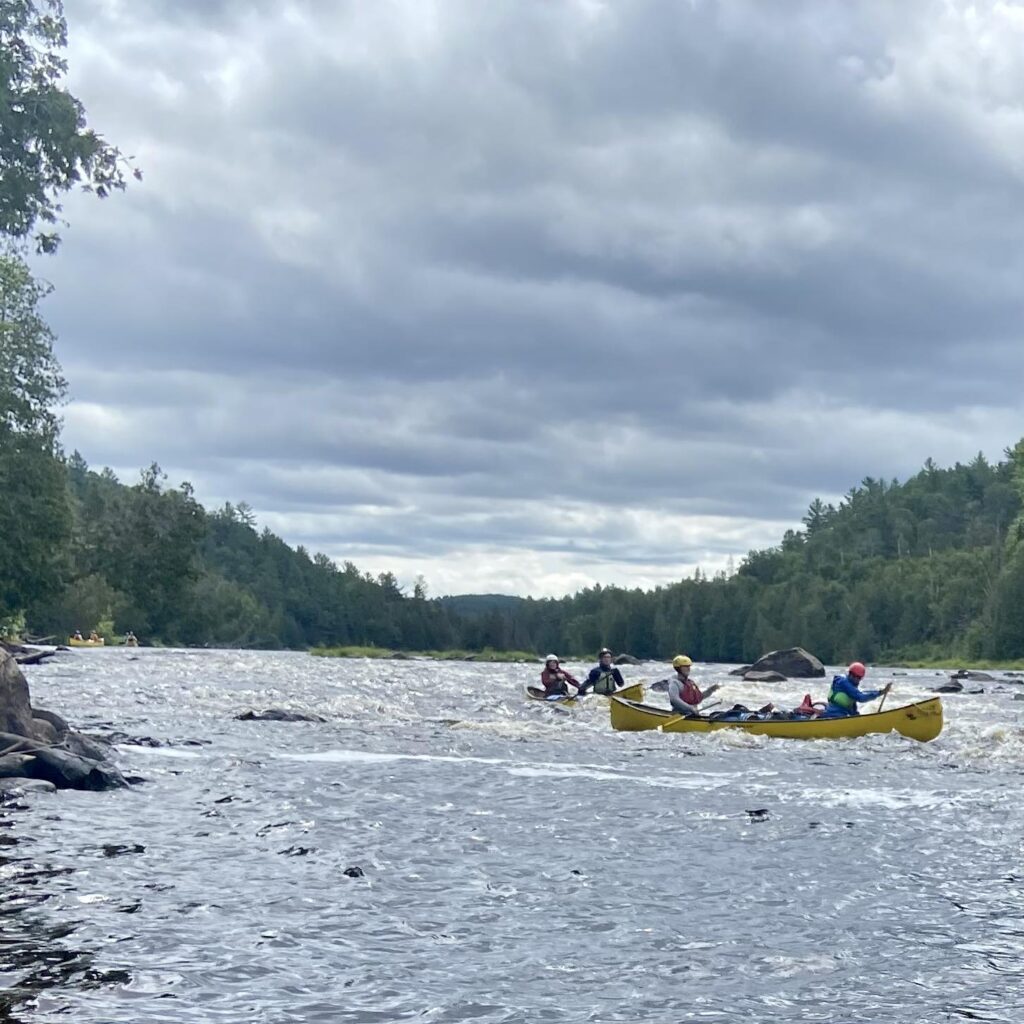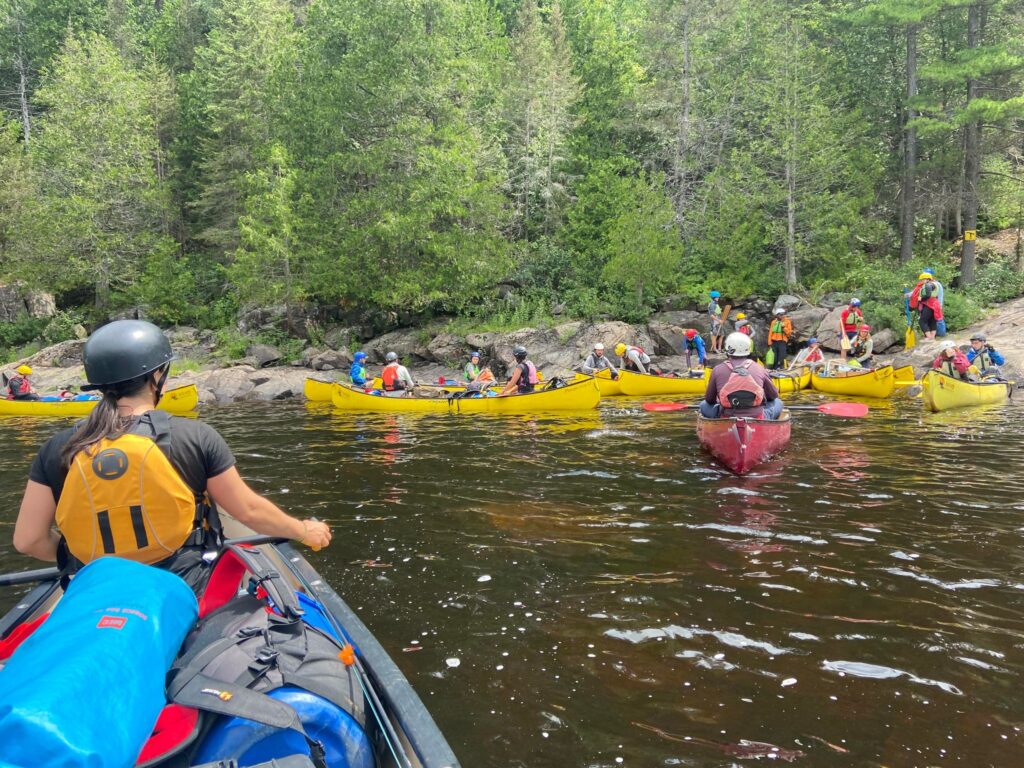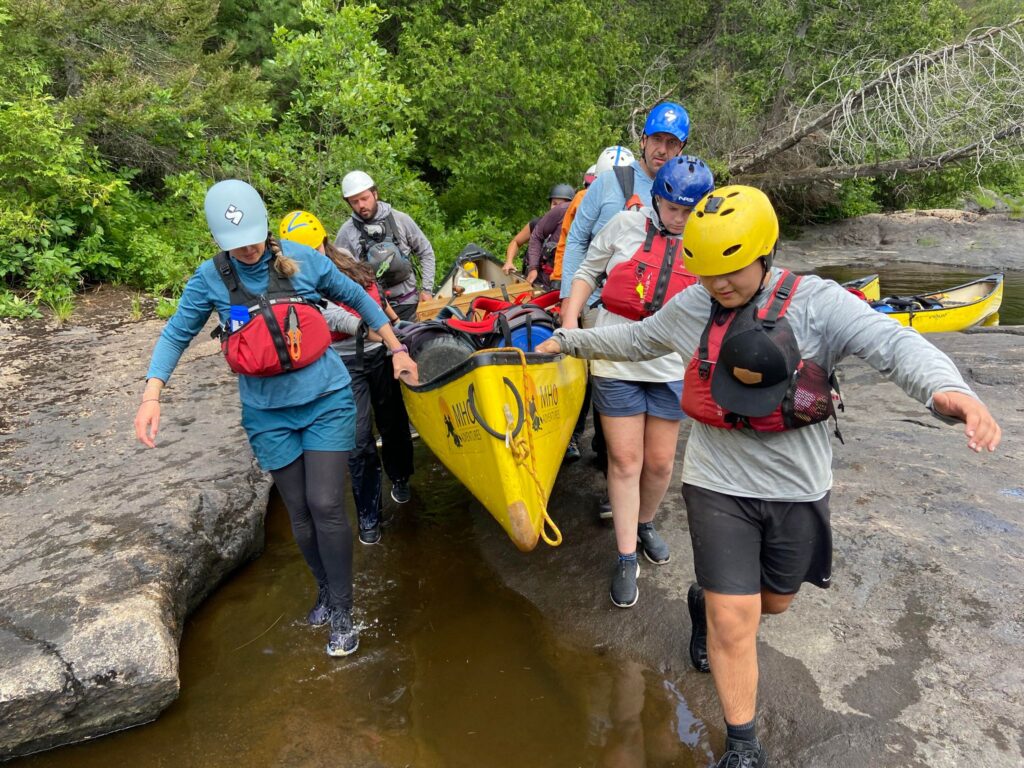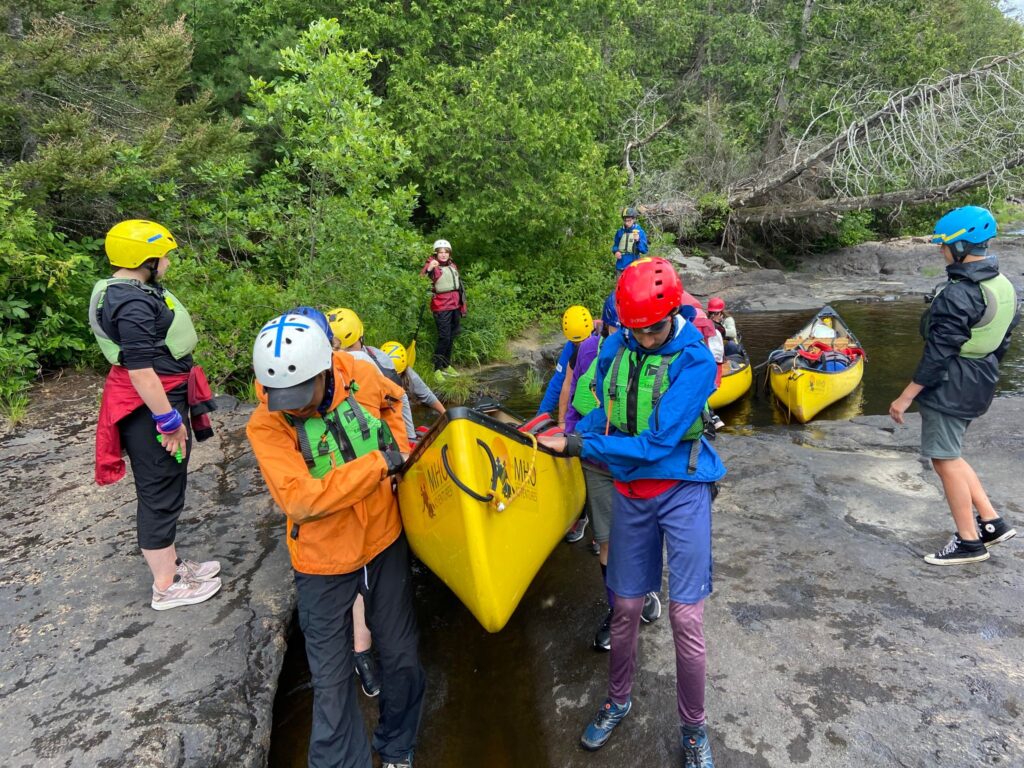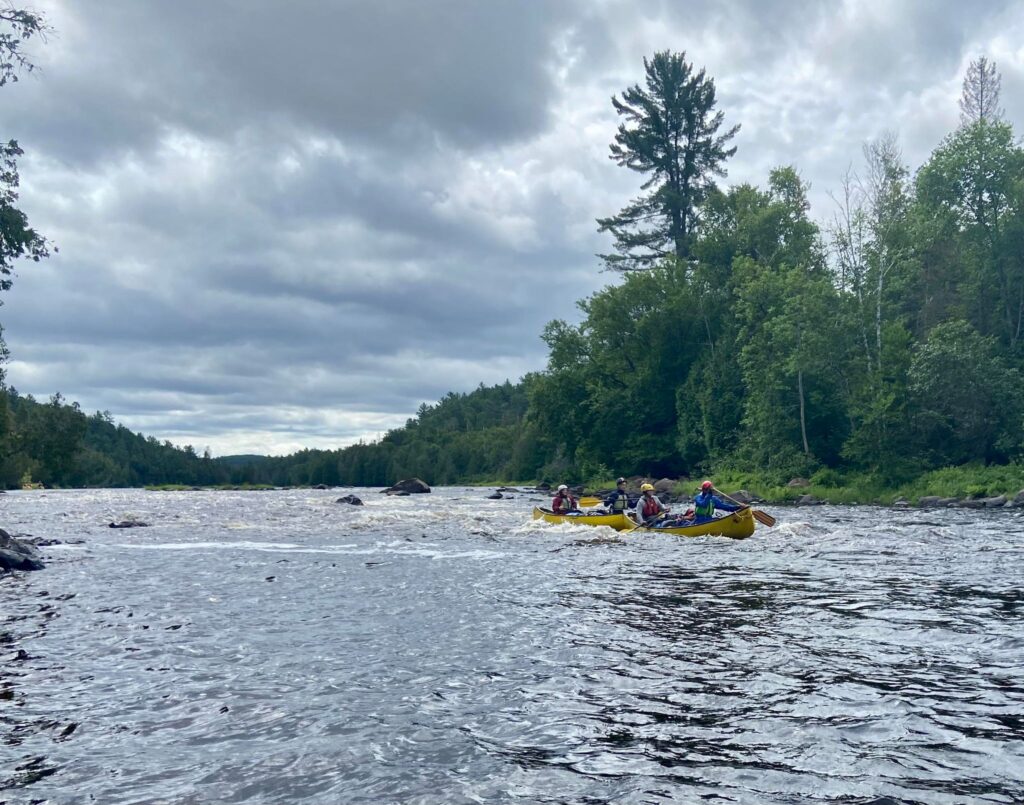
We’ve got big plans for today: 18 km with two rapids, three portages and a “portelle” (group portage over a short distance), as well as a few white-water sections.
After the campsite is dismantled, a hearty breakfast (breakfast burritos) is devoured and the canoes are loaded, Amy explains the challenges we’ll be facing today. Many of the participants don’t really realize what they’re getting into, because they don’t have much experience in the matter, but a whole lot of hard work awaits them today. The challenges will not be scarce.
The participants are getting a feel for things and it’s obvious when we get to the first rapids. Like old pros, most of the teams talk through their reading of the rapids. One or two teams validate their readings with the guides and the more experienced members of the mentoring team. We all get over the rapids smoothly or mostly so. Some teams end up backwards, but no one panics. The portages follow one right after the other with calm-water and white-water sections in between.
And today, our first miracle comes to be: not on the water but in the portage sections and the portelle. Working with their strengths and limits, everyone contributes. Think about it: we have to unload the barrels and equipment from the canoe in a tight space, cover the equivalent of a hiking trail and carry all the equipment and the canoes over rocks and roots, in between trees, following the irregular terrain. At the end of the portage, we then have to load everything back up in the canoes.
Now, try doing that three times a day with mosquitos, black flies, and horse flies in your face. It’s quite the challenge, but the group keeps a solid rhythm all day. They do marvellously well and can be proud of what they’ve accomplished!
We also face an additional challenge today: the portelle technique. To avoid another long portage, the canoes are carried with all their contents inside over a rocky outctrop and dropped on the other side in groups of six to eight people who need to coordinate themselves correctly to avoid any injuries or falls. Once again, the group does a great job.
But a nasty surprise awaits at the end: the campsite we were supposed to use was “vandalized” by a beaver who toppled a very large tree in the site. We have to add a few unexpected kilometres to get to another site, which, although magnificent, has a few logistic concerns as it’s perched up at the end of a rocky trail. The view is superb, but it’s hard to find a flat spot to set up a tent. We even have to cut down a half-uprooted tree and another one that’s in a precarious position and could fall on a tent.
Many members of the group swim until dinner, which, given our hectic day, is served after 8 p.m. It’s quite refreshing to get all the sweat off in the water.
As I write these last lines (10:30 p.m.), everyone is in their tent and the conversations are quickly dying out. Once my satellite connection is closed, it’ll be my turn to brush my teeth and get horizontal for some rest.
Louis-Étienne Prévost
Volunteer photographer-blogger for the On the Tip of the Toes Foundation
—
Translated by Anna Tomczyk
